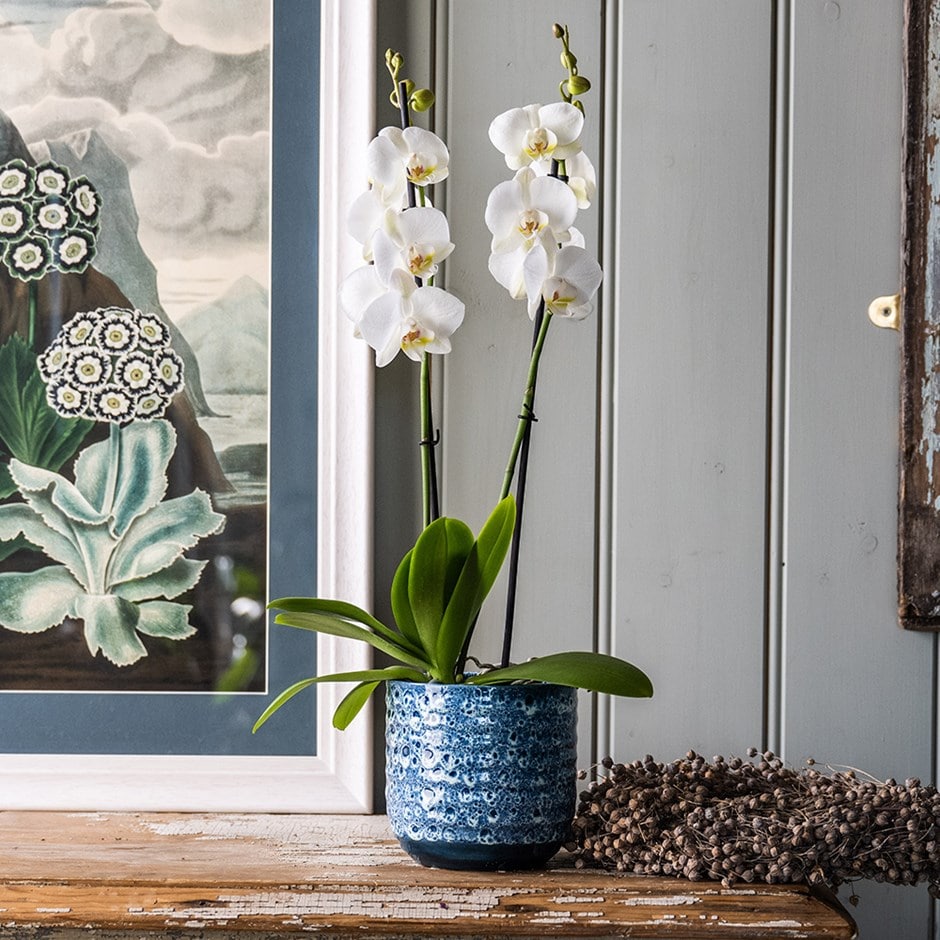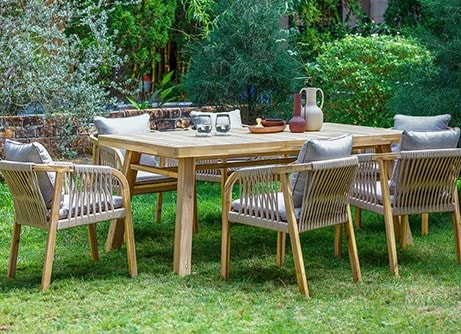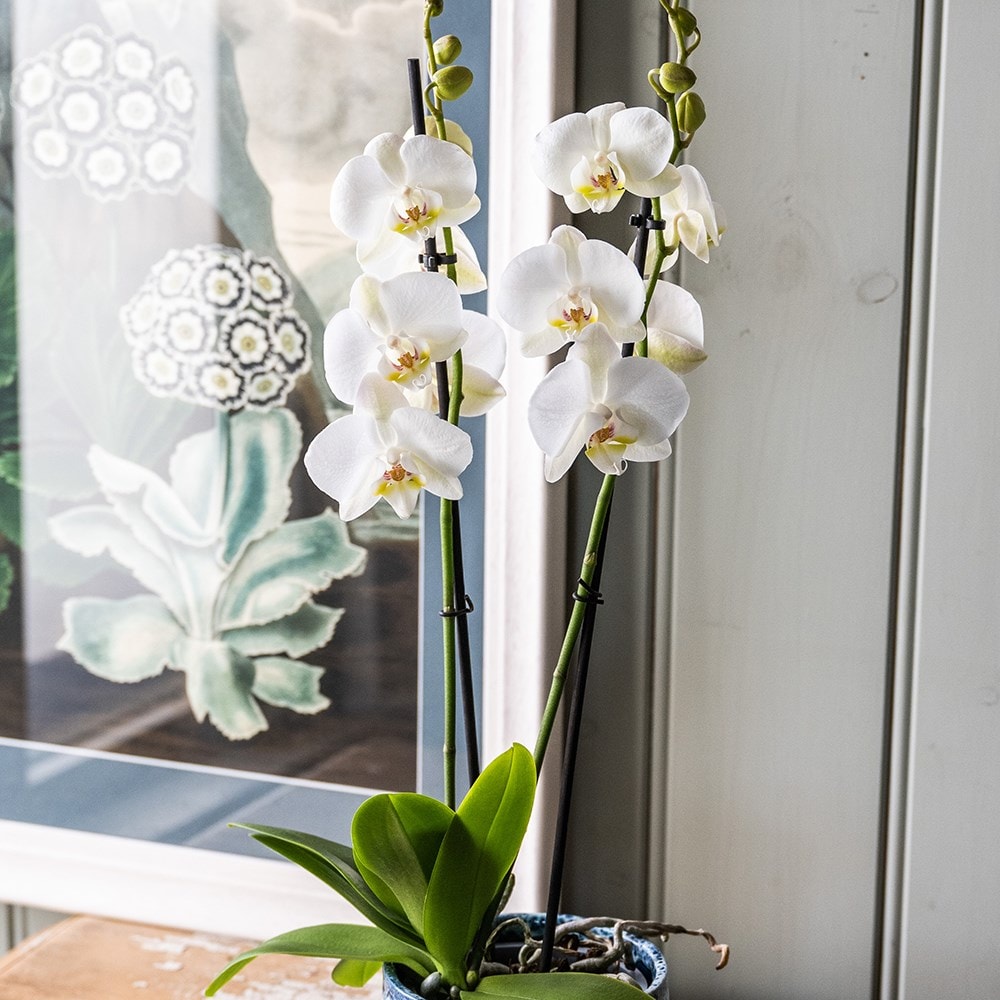
Phalaenopsis grandiflorum 'White' is an elegant variety renowned for its large, pristine white blooms. This moth orchid typically features broad, round, thick and velvety petals giving the flowers a luxurious, sophisticated appearance. The central lip (labellum) may have a slightly yellow or pale pink hue, offering a delicate contrast to the pure white palette and beautifully offset with its fleshy green leaves arranged in a rosette pattern.
One of the most remarkable qualities of this moth orchid is its ability to bloom at any time of the year, with flowers that can last long periods. This makes it an ideal gift for others—or yourself—as it offers prolonged enjoyment and beauty. The plant thrives in warm, humid environments with indirect light, so is a popular choice for indoor cultivation.
Its long, graceful flower spikes emerge from between the leaves, displaying multiple flowers that can brighten any space for an extended period. Its serene beauty and low-maintenance care requirements make it a favourite in floral arrangements and as a decorative houseplant.
Please note that the plant comes in a 12cm nursery pot as standard, unless a decorative pot cover is included as an option.
One of the most remarkable qualities of this moth orchid is its ability to bloom at any time of the year, with flowers that can last long periods. This makes it an ideal gift for others—or yourself—as it offers prolonged enjoyment and beauty. The plant thrives in warm, humid environments with indirect light, so is a popular choice for indoor cultivation.
Its long, graceful flower spikes emerge from between the leaves, displaying multiple flowers that can brighten any space for an extended period. Its serene beauty and low-maintenance care requirements make it a favourite in floral arrangements and as a decorative houseplant.
Please note that the plant comes in a 12cm nursery pot as standard, unless a decorative pot cover is included as an option.
How to care for Phalaenopsis grandiflorum White:
Keep the compost moist during the warmer months, but in winter you should reduce the amount it gets, and only water them occasionally. Ideally when watering, you should let them stand in a tray of water (or kitchen sink) so they can soak up as much as they like for an hour or two. Afterwards, let the excess water drain away completely. It is always best to give them a good soak when they get quite dry, rather than watering little and often. Their preference is for soft, tepid water.
They love humidity, so a bright kitchen or bathroom would be ideal, and mist the leaves with water occasionally, especially if they are in a heated room.
Don't worry if the roots grow outside the pot. In their native environment, they grow in the crooks of branches, and use these aerial roots to absorb water from the air. They do not mind being overcrowded in their pots, so you only need to repot them when the growth starts to suffer. They usually only send up flower spikes once a year, however you may encourage a second flush of flowers to form more quickly if you trim back the stem to just above the first node immediately after they have finished flowering. They prefer even temperatures, so try not to have big drops at night time.
They love humidity, so a bright kitchen or bathroom would be ideal, and mist the leaves with water occasionally, especially if they are in a heated room.
Don't worry if the roots grow outside the pot. In their native environment, they grow in the crooks of branches, and use these aerial roots to absorb water from the air. They do not mind being overcrowded in their pots, so you only need to repot them when the growth starts to suffer. They usually only send up flower spikes once a year, however you may encourage a second flush of flowers to form more quickly if you trim back the stem to just above the first node immediately after they have finished flowering. They prefer even temperatures, so try not to have big drops at night time.
Flowering period:
- Jan
- Feb
- Mar
- Apr
- May
- Jun
- Jul
- Aug
- Sep
- Oct
- Nov
- Dec
Eventual height:
0.7m
Eventual spread:
0.4m
Position:
Bright, indirect light
Rate of growth:
Average
Soil:
Specialist compost
Hardiness:
Frost tender
Product options

12cm pot | 60cm tall
£22.99
In stock
(shipped within 1-2 working days)
(shipped within 1-2 working days)

with white pot
£27.98
In stock
(shipped within 2-3 working days)
(shipped within 2-3 working days)

with jute pot
£30.98
In stock
(shipped within 2-3 working days)
(shipped within 2-3 working days)

with charcoal pot
was £36.98
now £31.38
In stock
(shipped within 2-3 working days)
(shipped within 2-3 working days)

with terracotta bowl pot
£37.98
In stock
(shipped within 2-3 working days)
(shipped within 2-3 working days)

with grey terracotta pot & saucer
£39.98
In stock
(shipped within 2-3 working days)
(shipped within 2-3 working days)

with mustard pot & saucer
£64.98
In stock
(shipped within 2-3 working days)
(shipped within 2-3 working days)

with polished brass pot
£40.98
sold out
Unavailable

with verdigris pot
£40.98
sold out
Unavailable

with brass etched pot
£50.98
sold out
Unavailable

with solid etched brass pot
£50.98
sold out
Unavailable
1
Delivery options (pick your preferred option at checkout)
Standard Delivery£5.99
Named Day Delivery£10.99



















